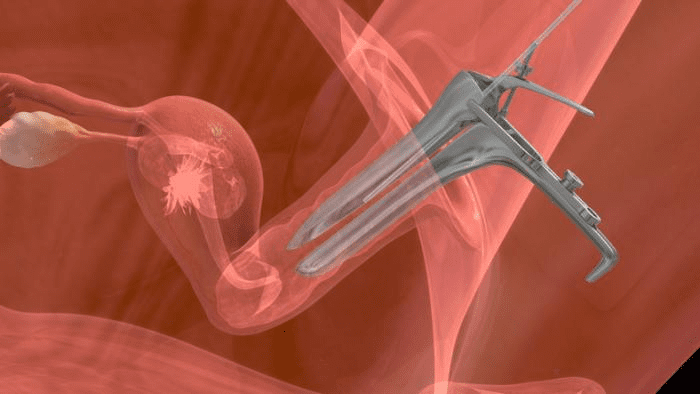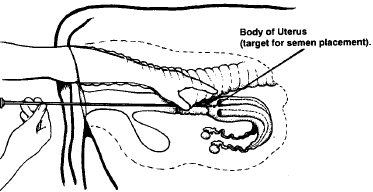Artificial insemination technique (AI) is a technique used in animal reproduction where sperm is collected from a male animal and manually introduced into the reproductive tract of a female animal.
This method allows for controlled breeding without the need for natural mating. AI is widely used in livestock production to improve genetic traits, increase fertility rates, and manage breeding more efficiently.
In this technique, sperm is carefully collected, usually from a high-quality male with desirable traits, and then processed and stored until it is ready to be used. When the female is in her fertile period, the sperm is inserted directly into her reproductive system using specialized equipment.
This process increases the chances of successful fertilization and helps produce offspring with specific characteristics, such as better milk production in cows or faster growth rates in pigs. AI is a valuable tool in modern animal breeding, contributing to improved livestock production and genetic advancement.
Artificial insemination technique vary between different animals, especially in terms of timing, as animals enter estrus at different times. There are two main methods: the recto-cervical method and the older speculum method.
Speculum Method Procedure

With the speculum method, semen is usually deposited only 1-3 cm into the external uterine OS or the posterior portion of the cervical canal. The equipment consists of a glass or metal speculum, an inseminating tube, and a light source.
A sterile, lubricated speculum is inserted into the vagina, and the cervix is located with the help of a light. The inseminating tube is then inserted through the speculum and into the external uterine OS or the posterior part of the cervical canal as far as possible, after which the semen is expelled or deposited.
In this method, there is no manipulation of the cervix to allow deeper deposition of the semen into the uterus, resulting in a lower fertility rate. Research has shown that fertility is about 9.7% lower with this method compared to the recto-vaginal technique.
Read Also: Artificial Insemination Techniques in Animal Breeding
Advantages of the Speculum Method
1. Direct Visualization: The speculum method allows direct visualization of the cervix, ensuring that the semen is placed accurately near or within the cervical opening. This increases the chances of successful insemination.
2. Reduced Risk of Trauma: By visualizing the cervix, the operator can carefully guide the insemination instrument, reducing the risk of trauma or injury to the reproductive tract.
3. Better Assessment of Cervical and Vaginal Health: The method allows the operator to assess the health of the cervix and vaginal tissues, identifying any abnormalities or infections that might affect the success of insemination.
4. Higher Success Rates in Some Species: In certain species, like horses, the speculum method can result in higher pregnancy rates compared to other AI techniques due to the precision of semen placement.
5. Minimal Equipment Needed: The equipment needed is relatively simple and cost-effective, often requiring only a speculum and a light source for visualization.
Disadvantages of the Speculum Method
1. Invasive Procedure: The use of a speculum can be uncomfortable for the animal or human being inseminated. It requires restraint and can cause stress.
2. Requires Skill and Experience: The technique requires a skilled operator to properly use the speculum and visualize the cervix. Inexperienced operators might struggle, leading to lower success rates or even injury.
3. Limited Use in Certain Species: The method is not suitable for all species, especially smaller animals or those with a complex reproductive anatomy, where visualization of the cervix is difficult or impossible.
4. Risk of Contamination: If the speculum or other instruments are not properly sterilized, there is a risk of introducing infections into the reproductive tract.
5. Time-Consuming: The process can be more time-consuming compared to other AI techniques, especially when performed on multiple animals.
6. Potential for Discomfort: In humans, the procedure can cause discomfort or pain, particularly if the cervix is difficult to access or if there is any underlying gynecological condition.
Read Also: Natural Mating vs Artificial Insemination: Find out which is Better
Recto-Vaginal Technique

In this method, the equipment includes an inseminating tube or catheter, which is 5-6 mm in diameter, 40-45 cm long, and a syringe. The inseminating tubes are disposable and are connected directly to plastic tubes.
The main steps for performing insemination are:
1. Put on clean rubber or disposable plastic gloves and sleeves.
2. Connect the sterile inseminating tubes to the syringe or inseminating tubes and draw in 1 ml of diluted semen.
3. Place the loaded tube in a horizontal position, with the portion near the syringe end held in the mouth.
4. Lubricate the glove and sleeves.
5. Carefully insert the hand and arm into the rectum and remove any feces if necessary.
6. Clean the exterior of the vulva with cotton or paper towels and the inside edge of the vulva lips with fresh cotton.
7. Insert the inseminating tube into the vulva as far as possible without touching the inside surfaces.
8. Pass the tube along the roof of the vagina, avoiding the urethra until it reaches the cervix.
9. With the hand in the rectum, press downward on the rectal wall, grasp the cervix, and guide the tube into the external uterine OS with the help of your thumb and little finger around the posterior end of the cervix.
10. Gently apply forward pressure on the tube while rotating the wrist to manipulate the cervix until the desired penetration is achieved.
Advantages of Recto-Vaginal Technique
1. High Accuracy in Semen Deposition: The Recto-Vaginal technique allows the technician to manually guide the insemination rod through the cervix, ensuring precise placement of semen directly into the uterus. This increases the chances of successful fertilization.
2. Minimally Invasive: The procedure is less invasive compared to surgical methods, reducing the risk of complications and infection. It does not require general anesthesia, which makes it safer for the animal.
3. Cost-Effective: Since the procedure is relatively straightforward and does not require specialized equipment or surgery, it is more cost-effective than other advanced AI techniques. This makes it accessible for routine use in farm operations.
4. Rapid Procedure: The technique is quick to perform, allowing for the insemination of multiple animals in a short period. This efficiency is particularly beneficial in large-scale operations.
5. Widespread Adoption and Expertise: The Recto-Vaginal method is widely practiced, and many technicians are trained in it, leading to consistent results and widespread availability of skilled practitioners.
Disadvantages of Recto-Vaginal Technique
1. Requires Skilled Personnel: The technique requires significant expertise and experience to be performed correctly. An unskilled operator may cause injury to the animal or improperly deposit the semen, reducing the chances of successful insemination.
2. Risk of Injury to the Animal: There is a potential risk of injury to the reproductive tract if the procedure is not done carefully. Improper handling can lead to trauma or infections, which can affect the animal’s fertility.
3. Physical Strain on the Operator: The technique involves physical labor, as the operator must insert one hand into the rectum while guiding the insemination rod through the vagina. This can be physically demanding, especially when performed repeatedly in large-scale operations.
4. Limited Use in Small or Delicate Animals: The Recto-Vaginal technique is less suitable for smaller or more delicate animals due to the physical size of the operator’s hand and the animal’s anatomy. In such cases, alternative methods may be preferred.
5. Stress to the Animal: The procedure can cause discomfort or stress to the animal, which might require sedation or additional handling techniques to minimize distress. This can be a concern in sensitive or high-stress animals.
In summary, the insemination process in animals varies depending on the species and the timing of estrus. Two primary methods are used: the speculum method and the recto-vaginal technique.
The speculum method involves inserting a lubricated speculum into the vagina to locate the cervix with the help of a light, followed by the insertion of an inseminating tube to deposit semen in the external uterine OS or posterior cervical canal. However, this method does not involve manipulation of the cervix for deeper semen deposition, resulting in a lower fertility rate.
The recto-vaginal technique is more involved, requiring the insertion of an inseminating tube through the vulva and guiding it into the cervix while manipulating the cervix through the rectum. This method allows for deeper semen deposition and generally results in higher fertility compared to the speculum method.
Read Also: The Role of Livestock Farming in a Sustainable Food System

